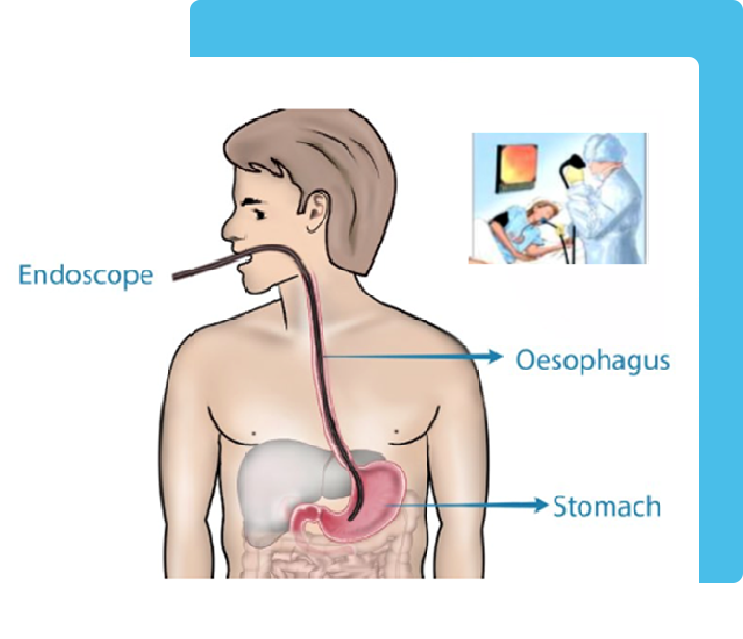
- Appointments
- Sunnybank 07 3344 1440
- Mater Health Hub 07 3041 5082
Gastroscopy, also known as upper endoscopy, involves using a thin flexible tube with a video camera at the tip to examine the upper digestive tract.
The tube is inserted into the mouth and travels down the food pipe (oesophagus), then into the stomach and first part of the small intestine (duodenum), to view these areas. It helps to inspect the inside of digestive tract, take a biopsy if required and to perform therapeutic procedures like removal of polyp, control of bleeding, dilatation of stricture etc.
A gastroscopy is indicated to evaluate symptoms such as difficulty in unexplained swallowing, nausea, vomiting, painful swallowing, heartburn, indigestion, abdominal pain or weight loss. It is also performed to evaluate iron deficiency anaemia to check for source of bleeding like ulcer or mass.

If you are having a gastroscopy, you will need to have an empty stomach for 6 hours so the doctor can see clearly and so you do not vomit. You doctor may advise you to stop or change some of your medications like blood thinner, diabetes medications, acid control medication as indicated.
The gastroscopy is usually done under light sedation given by experienced anaesthetist. The anaesthetist may also spray the back of your throat with local anaesthetic to make it numb. Your vitals like breathing, heart rates, blood pressure etc will be continuously monitored during procedure. The procedure take about 15 – 30 minutes and most people don’t’ remember anything due to sedation.
A small mouthguard will be put between your teeth to protect your teeth as well as to stop you from biting the endoscope. The endoscope is passed under vision through the mouth and then through the oesophagus, stomach and first part of the small intestine (Duodenum). A small video camera at the end of the endoscope helps to inspect inside of gut properly and also transmits a video image to a monitor and to inspect inside of gut properly and take photos.
Gastroscopy is usually very safe procedure. Very small risk of adverse effect to anaesthetic medications. You may feel like sore throat or abdominal bloating after procedure. Serious risk are extremely rare and involve tear (perforation) in digestive tract, bleeding or aspiration of stomach contents in to lungs. This may require admission to hospital for observation, antibiotics and sometimes repeat procedure or major surgery may be required to fix the problem.
All Copyrights © 2023 Dr. Kaushik Kumar
Powered by :: Growup Business Solution